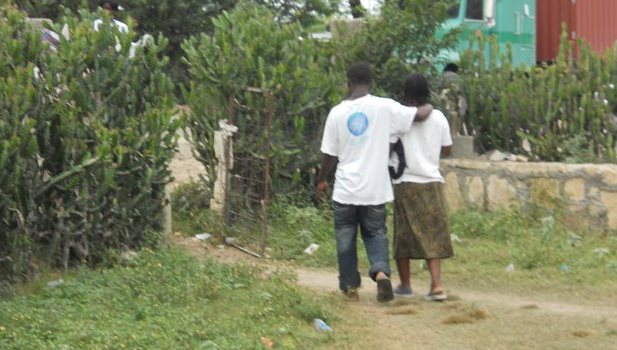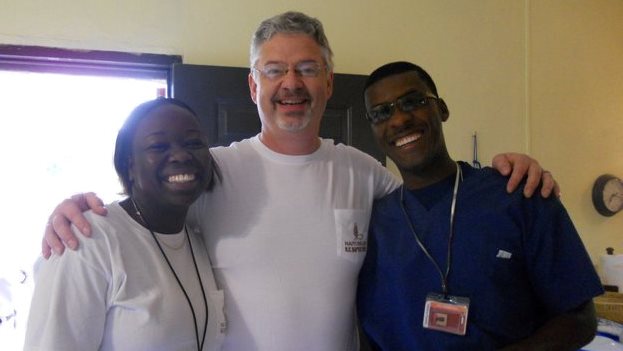This is the final post of the “Eleven Days in Haiti” series which started here: https://fbcbridgeport.org/eleven-days-haiti-part-1-series-intro. Be sure to get caught up if you missed a prior post!
DAY 10- LEAVING ON A JET PLANE
The situation on all fronts is much better today. Team 51 has now completed our mission to assist in disaster relief in the Port-au-Prince region. As of 7:00 am, American Airlines says our flight from Haiti is on time. So we are at T minus 6.5 hours. Steve’s medevac flight is scheduled for 10:30. Arrangements have been made to use one of the mobile clinic vans to get him to the airport. A private flight like this evidently bypasses customs, gates, security, etc. Jenna seems much better. If she looks this good and manages to stay upright through customs and security, all is well. I’m planning to call her mom from Miami to inform about her condition so there are no surprises. We still need to take our group photo for the Team 51 to be placed on the wall of fame in the mission house. Word is, we get a second one called Team 51A, which will recognize our extra time and service there.
The return flight to Miami and on to Raleigh-Durham was uneventful. When the jet gathered speed, nosed up and the wheels left the ground departing Port-au-Prince, the entire team let go an audible sigh of relief.
DAY 11-TAKE ME HOME COUNTRY ROADS
The night was spent again at the lake houses outside of Roxboro and we arose on Thursday ready for our drive back to West Virginia. Other than one stop to repair a faulty windshield wiper, this leg of the trip was also uneventful, unless you consider it significant that it snowed all the way back. Fitting.
EPILOGUE, MAY 2016
I just reached out to my cousin Dan and he reported back to me regarding the current status in the Port-au-Prince area of Haiti. On the medical side, Dr. Vlad has established a permanent clinic, but also oversees the ongoing mobile clinic process. Volunteers are still a blessing to the efforts, but North Carolina Baptist Men no longer arrange trips. Their operation remains disaster relief, so they have transitioned to other areas. On the re-construction side, Dan told me of a project called Caring House Project, operated by a builder in Florida. They go in once each year and build a complete village.
Since my experience in 2010, I have not again felt the call of God to serve in a foreign mission field. Maybe that time will come again. But it has changed my view of foreign missions. I confess that prior to 2010, my preference was to just contribute financially. After all, in most of the areas we serve outside of this country, I thought it was more cost effective to buy supplies and labor on site. Support the local work force and economy and empower them to do the work. How efficient is it to send a team of professionals half way around the world to do work that can be done by local providers. But I now believe that view is ill-informed and short-sighted on multiple levels. I’ll not belabor the point, but consider this:
“If anyone has material possessions and sees his brother in need but has no pity on him, how can the love of God be in him? Dear children, let us not love with words or tongue but with actions and in truth.” 1 John 3:17-18.
If any of this has inspired you, or if God is calling you to serve or provide from your “material possessions”, contact me through Fellowship Bible Church. I can make that happen for you.


